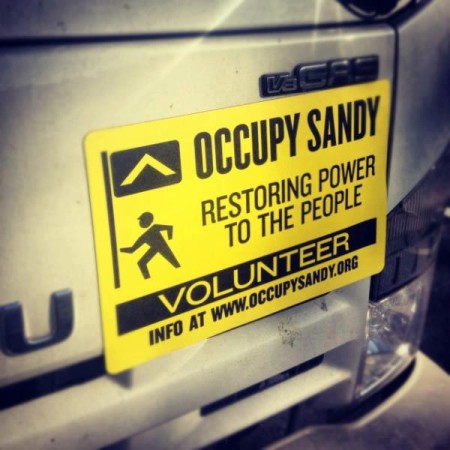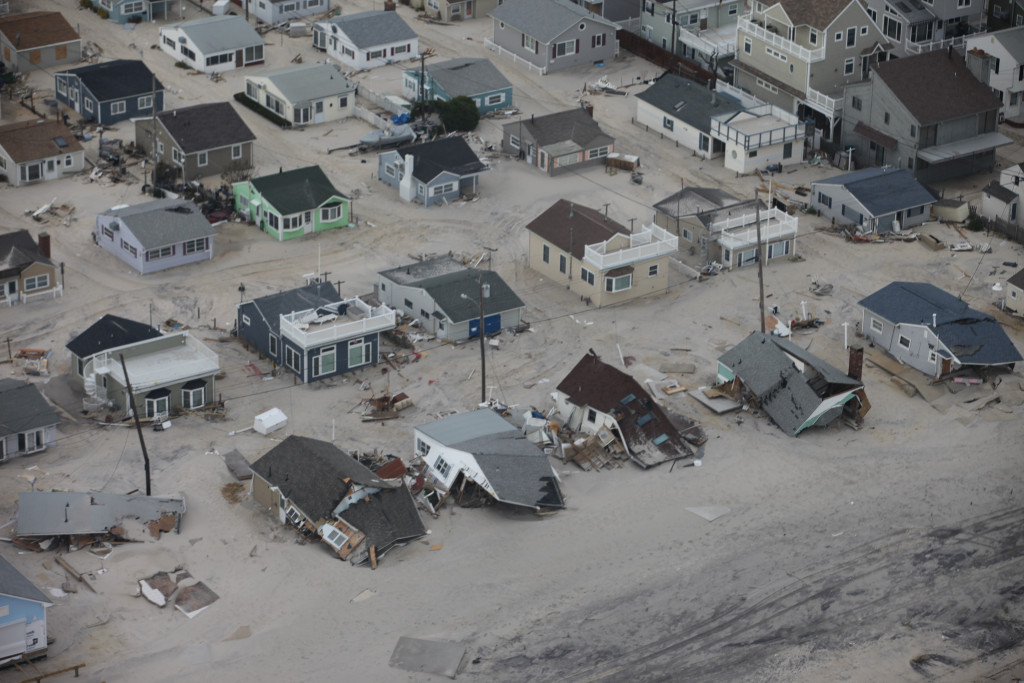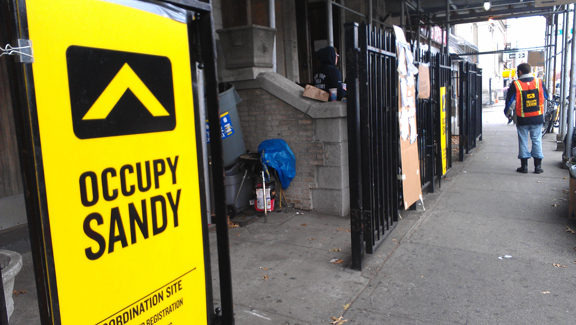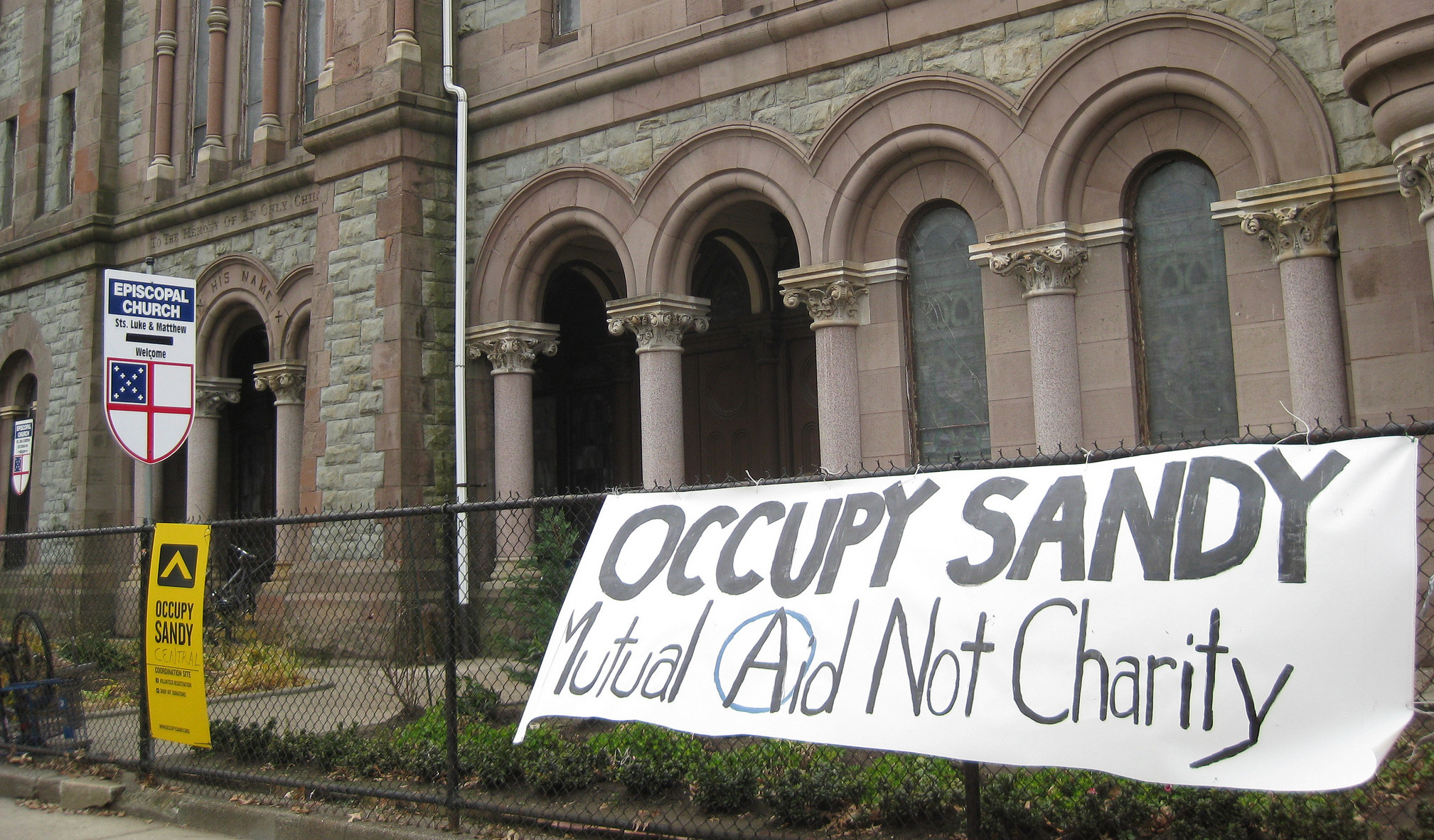Originally published at MintPress News.
AUSTIN, Texas — The science of global warming tells us that we can expect more severe weather and more severe weather events, like floods, heat waves, droughts and hurricanes. Though no specific weather event can be definitively blamed on climate change, responses to recent natural disasters provide valuable insights into how urban populations can recover their infrastructure quickly, identify the most vulnerable areas, and increase their chances of survival.
As this article went to press, Japan was being battered by Super Typhoon Vongfong, and meteorologists were warning that 40 million Americans could face especially severe storms including tornadoes and severe thunderstorms. Earlier this year, severe floods threatened several communities in London.
After disasters like Hurricane Katrina or Hurricane Sandy, groups like Common Ground and the Red Hook Initiative received national media attention for offering more effective support to victims than large groups like the Federal Emergency Management Agency or the Red Cross. This was possible because grassroots groups relied on pre-existing community ties while also embracing new technologies like social media, as in the case of groups like Occupy Sandy, a community that was built and organized to help the victims of this storm to recover.
And while Wall Street reopened two days after Hurricane Sandy made landfall, millions of residents spent much longer in the dark. Even climate change researchers were victims of the power outage.
The disasters you never hear about
Eric Klinenberg is a sociologist who was born in Chicago but now lives in New York. He spoke at SXSW Eco 2014 on Oct. 6 in Austin, Texas. He began his lecture by telling the audience about the Chicago Heat Wave of 1995.

When Klinenberg polled the audience, far fewer had heard of this disaster than disasters like Hurricane Sandy. Yet the heat wave killed 739 people — far more than Sandy — and caused citywide traffic gridlock, power outages and water pressure problems.
“In Chicago, so many neighborhoods, so many different people were opening up fire hydrants that 3,000 plus were open at one time, concentrated in the most vulnerable areas that they actually ended up depleting the water pressure,” he told the audience. “So there were some neighborhoods in the most vulnerable parts of Chicago that had no electricity, no power and no water at the time when they needed it most.”
Thousands of residents were affected by heat stroke and heat-related illnesses, overloading hospitals.
“At one point, half the hospitals in the city had to close their emergency rooms — they went on bypass, because they literally had no more places to treat sick people. And the city had no coordinating care. They didn’t know which hospitals were open and which hospitals were closed. So an ambulance would show up with a person needing urgent care only to be told they had to drive to the next hospital and hope that it was open, and in some cases the hospitals were driving through the gridlocked streets for up to 10 miles, and as you can imagine, this only made the line for the next ambulance even longer.”
The class structure of modern life provided another complication: “When it gets really, really hot, everyone who’s got power and influence and money gets out of town and goes to the water where it’s cool.” And since cities rarely plan ahead for catastrophic heat waves the way they plan for other forms of disaster, this left the government’s power structure dangerously slow to respond.
The media also plays a major role in how cities respond to severe weather.
“If a hurricane is coming to the city, the Weather Channel shows all that weather porn all the time, all those crazy colors. It breaks into all your favorite shows and football games — well, maybe not here in Texas,” Klinenberg told SXSW Eco.
“And they show us the maps and we can all geek out over category three or category four. We forget by next week but we all become experts. It’s orienting our attention to this approaching disaster, and that forces the policy and political officials to do something. They have to be there, because if they go out of town it will look really really bad.“
Weather reporting could depict the dangers of heat waves more realistically by representing heat waves more like a hurricane on a weather map, for example.
“Heat waves in typical years kill more Americans than all of the other natural disasters combined. But they don’t make for great imagery so we don’t tell stories about them that often.”
Though Klinenberg says journalists have improved in years since the heat wave, he accused media coverage of being facile. In Chicago’s heat wave in 1995, some reporters resorted to the old cliche of frying an egg on a sidewalk or explained how businesswomen could keep their makeup from running. Elsewhere in the city, he said, elderly people were dying in isolated homes.
MintPress News asked Klinenberg about the media’s responsibility in reporting on severe weather and climate change.
“To the extent that major media organizations hit on this issue generally — climate change, global warming, mitigation, adaptation — you make it much more difficult for it to be swept under the rug. Political leaders will manage disasters as public relations problems more than as public health crises.
“That’s a sad fact of the world we live in. And as a journalist, it’s your job to call them out on that. So, report on these things.”
Klinenberg also warned against greenwashing by city officials: “If you see a beautiful green roof, and a great press release, with an invitation to go on a junket with the mayor and go up on a helicopter and see all the green roofs, ask yourself what they want you not to see?”

Isolated humans die, while communities can thrive
A major conclusion of Klinenberg’s research, published in his 2002 book “Heat Wave: A Social Autopsy of Disaster In Chicago,” is that those who were both poor and isolated from social support were most vulnerable to death. The bodies of some elderly victims weren’t discovered for days or even weeks after they died.
Yet just knowing this isn’t enough for Klinenberg. “We should know how to protect people when the tough times come,” he explained.
Klinenberg studied neighborhoods which had better than expected outcomes for their demographics.
Neighborhoods that saw fewer fatalities had what he calls “a social infrastructure of streets, and sidewalks and public spaces. There’s commercial strips nearby that have coffee shops and restaurants and mom and pop stores that people can use. They draw vulnerable people, especially older people, out of their homes and into places where there’s public life. This can be very protective at a time like this.”
These public spaces not only offer better infrastructure during a disaster, but also create social connections that the elderly and other vulnerable people may depend on for survival.
After completing his research in Chicago, Klinenberg moved to New York City, where he was one of many who spent days without power and struggled to get a cellphone signal after Sandy — highlighting for him the importance of this new and vulnerable technology for social connection.
As the recovery began, he discovered some of the many community collectives which formed to support their neighborhoods, like Rockaway Beach Surf Club and the Red Hook Initiative. These efforts provided further evidence of Klinenberg’s theory that social connections promote better resilience in recovering from severe weather.
By enhancing connection during the more recent disaster, social media was also a means to survival, he explained:
“They told a friend to get to the city and try to post on Facebook, ‘We’re going to be at the surf club. If you need anything, come. If you have anything, come.’ And thousands of people came with food, with supplies, and electricians came and plumbers came and people who could haul things came and people who could rebuild things came, and this neighborhood suddenly had this resilience center that was the foundation for all kinds of spontaneous social organizing — because it had a surf club where the owners knew their neighbors well.”
Another source of resiliency after Sandy was the well-known Occupy Sandy movement, whose volunteers gained some notoriety for feeding workers from FEMA when their own supplies were lacking. MintPress spoke by phone with Liam Shea, a Staten Island resident, who became a community organizer in his neighborhood and later worked with Occupy Sandy volunteers as that movement formed.
“Sandy landed on me here! But you had pretty well-equipped community people in the area already. Not only were we petrified — it was right in our face — we were prepared already, from Occupy.”
His experiences with Occupy Wall Street helped Shea take stock and begin organizing a response.
“What resources do I have to help the situation. One of them was dealing with people, and the other was the Internet. The Internet knew where I was and it was easy to get ahold of people in other parts of the world. They wanted to help people on the ground, and we were those people on the ground.”
Summing up his experience, he said, “Some of us stepped up because we were used to doing that.”

Planning for the future
Zach Baumer, an engineer with an MBA focused on climate, is Climate Program manager at the City of Austin’s Office of Sustainability.
“Drought, extreme heat, with at the same time flooding and wildfire, are climatic events that we’re used to here in Austin. They happen all the time. The projections are that it’s going to get hotter during the summer. The amount of rain we’re likely to have is about to stay the same on an annual average, but we’ll likely have more extreme storms with longer periods of heat and dryness between them,” Baumer told MintPress.
Austin is approaching these risks from two angles. In the immediate, the city is trying to educate residents about the risks of fire and seeking new ways to diversify the city’s water sources.
The other approach is long-term.
“We’re planning for changes in 20, or 50 or 100 years from now. If you’re going to invest a large amount of money into a piece of infrastructure, we keep in mind that this infrastructure has to operate in a different range of conditions so we’ll be prepared now and in the future to function,” Baumer said.
At his SXSW Eco talk, Klinenberg cautioned against what he called the “Homeland Security approach” to climate change design — planning for a possible future event in a way that makes modern life more oppressive. For example, many cities have proposed building walls and gates to keep water out, initiatives that could have serious consequences for both surrounding ecosystems and nearby communities.
“If you are going to build a water protection system, you certainly want to do what they did in Singapore — to build a barrier that doubles as a public park land, recreational area. It controls the water but also adds something to the urban environment,” he suggested.
Projects like these benefit a community twice. It might protect from future climate disasters, but a new public space also encourages residents to leave their homes and form the social connections which Klinenberg’s research proves increase survival.
Meanwhile, the networks created by social media offer another opportunity for future planning.
“When the London floods hit this year, people were contacting me to say ‘What do we do?’” Shea said from Staten Island. “It happened the same. People are people and you have to remember that in the face of disaster.”
Once those networks are formed, cities need to find ways to empower them in disasters.
“Everybody saw what happened with the Red Cross here. It was on the news how terribly they handled things. I say go local,” Shea said.
Long-term support and retreat?
Late last October — weeks after last year’s SXSW Eco conference — heavy rains brought severe flooding to Austin’s southeastern neighborhoods around Onion Creek. In the end, over 1,000 homes were damaged or destroyed.
Baumer explained, “Watershed Protection have been working to redraw to make sure all the floodplain maps are up to date and accurate, so everyone can understand whether you are at risk or not at risk. As a follow-up to the Halloween Floods, the city’s arranged buyouts where zones that have been flooded before, that we know the houses are in the floodplain, and we know it’s going to flood again and again, the city has started a program to buy homes and destroy them and just cancel development in some areas.”
“In the long term,” he concluded, “that’s the best solution, where people just aren’t at risk.”
At SXSW Eco, Klinenberg called this strategy “strategic retreat” and emphasized that it is controversial among residents — embraced by some and rejected by others. It’s also expensive, and ineffective if funding runs out or it isn’t adopted by everyone in an area. When that happens, the number of vulnerable people without support networks increases.
As media attention on the aftermath of a disaster fades, so does the pressure to ensure full recovery. Handling of federal funds for Hurricane Sandy has been widely criticized.
Shea’s Staten Island neighborhood still contains many abandoned properties, which Klinenberg’s research suggests can make a neighborhood more dangerous in the event of a disaster. Shea described an abandoned, foreclosed residence next door to his own which is now owned by Wells Fargo. Unable to get the bank to handle it, the city boarded it up, even though it was full of rotting food and mold.
“I can’t open my windows,” Shea complained about the mold from the abandoned neighboring house.
But when MintPress mentioned Klinenberg’s idea of “retreating” from the worst affected regions, Shea resisted the idea.
“No. Weather changes throughout the course of history. These places have been here for hundreds of years. Yes, this is all coming up because we fucked the planet up, but in that case we can take steps to prepare better. Neighborhoods like mine should be prepared for the worst,” he said.
Meanwhile, he’s suspicious of the motives behind buyout proposals. “Neighborhoods like mine, they want us out of here anyways. I’m eleven blocks from the beach but they’ll still call it beachfront property. They’ll gladly gentrify us with water, and then they’ll do whatever they want.
“It’s up to everybody to fight. If you want to live here, you have to stand up for yourself.”
